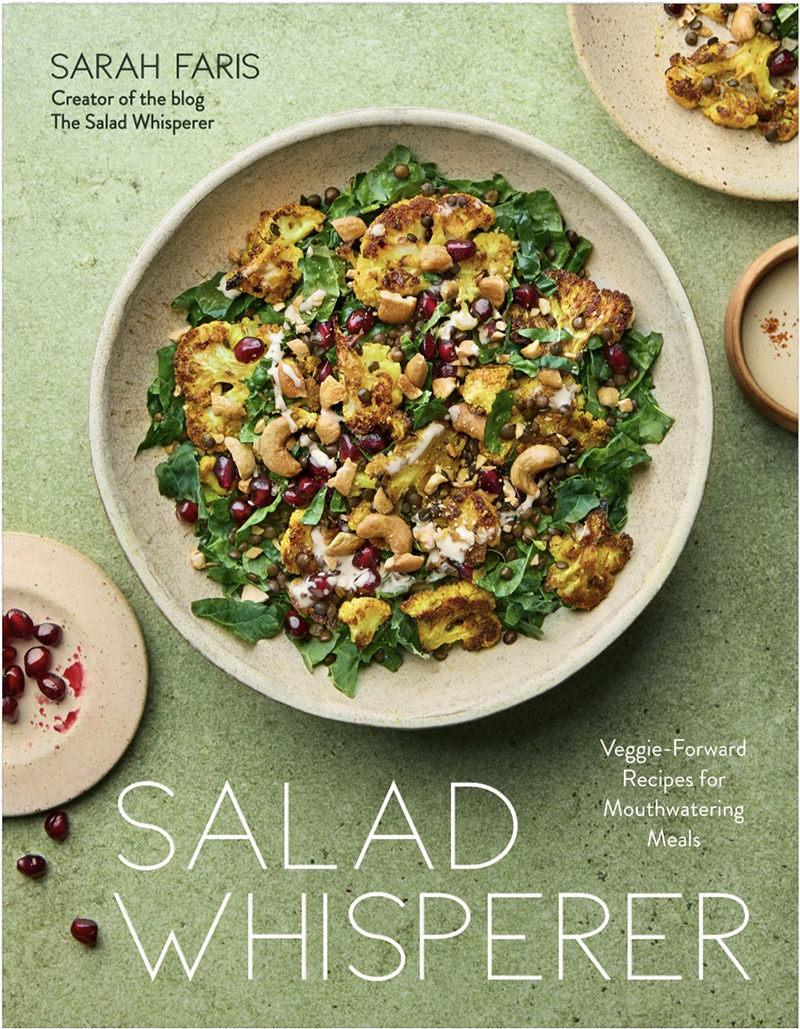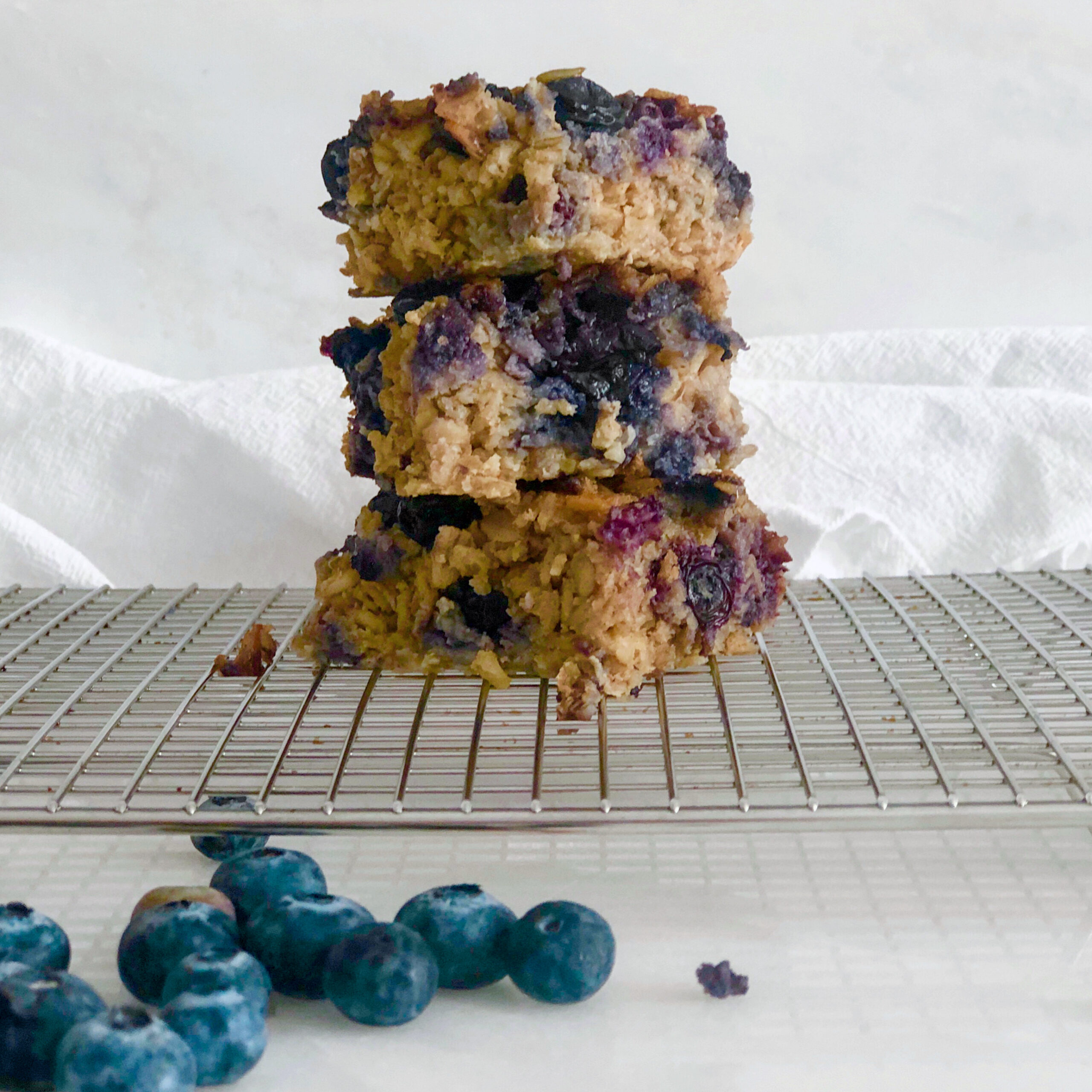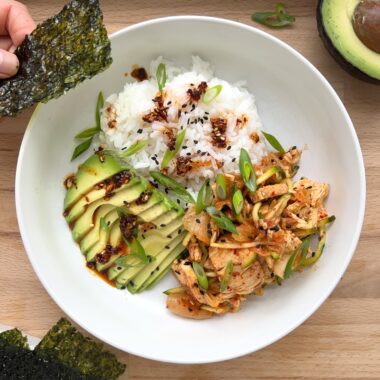
HOW TO MAKE A RESTAURANT QUALITY VINAIGRETTE
You’ve already spent time and effort building your dream salad. Why shortchange it of greatness by slacking on the dressing?
I get it. It’s really convenient to just add everything to a jar and shake it up. Sadly, you will never get a thick, stable, properly emulsified vinaigrette that way. The good news is that it’s not difficult to make a restaurant quality salad dressing at home using a whisk for a small batch or a blender (an immersion blender is my preference, but a top loading blender gets the job done too) for a large batch. You will also need to use emulsifiers, which bind together the oil and vinegar (or other acid, such as lemon juice), to make a smooth, creamy and balanced dressing.
First things first.
WHAT IS EMULSIFICATION?
Emulsification is the process of combining two liquids that normally do not mix well together, such as oil and water, or oil and vinegar, into a stable mixture called an emulsion. During emulsification, one liquid is dispersed into the other in the form of tiny droplets, which are stabilized by emulsifying agents or mechanical action to prevent separation.
WHY IS IT IMPORTANT TO EMULSIFY YOUR VINAIGRETTE?
1. TASTE
Without a properly emulsified dressing, some bites of your salad will taste overly acidic and others will be oily. Emulsified dressings also have a more pleasant mouthfeel that feels less greasy on the palate.
2. TEXTURE
Emulsified dressings have a thick, creamy texture that coats the salad ingredients more effectively. Salad dressings that aren’t emulsified slip off the ingredients and settle to the bottom of the bowl.
3. STABILITY
Emulsification helps prevent the ingredients in the dressing from separating so that the dressing remains well-mixed over time. This is especially important if you’re making it ahead or storing it in the fridge.
HOW DOES EMULSIFICATION WORK?
Emulsification requires the breakdown of one liquid into tiny droplets a that will be evenly dispersed throughout another liquid. To create a stable emulsion, you need:
1. Mechanical Action such as whisking, shaking or blending to break the liquids up into small droplets so they distribute evenly, and;
2. Emulsifying Agents (also called “emulsifiers”), which are substances that help stabilize the emulsion by preventing the droplets from coalescing (coming back together). Emulsifiers have molecules with both hydrophilic (water-attracting) and hydrophobic (oil-attracting) ends, allowing them to bind with both oil and water, thereby stabilizing the mixture. Commonly used emulsifiers are puréed garlic, honey, mustard, tahini, avocado, egg, yolks, etc. In the Restaurant Style Vinaigrette recipe below, I use my favorite emulsifier combo, honey and Dijon mustard.
WHY DOES SPEED MATTER WHEN DRIZZLING IN THE OIL?
I often get asked why can’t you just add emulsifiers, oil and vinegar to a jar and just shake? While your shaken dressing may remain stable for a few minutes, it will not be as thick, smooth and cohesive as a properly emulsified one which will stay that way for days.
Drizzling the oil slowly while whisking does the following:
1. Encourages Formation of Smaller Droplets: Adding the oil gradually and whisking or blending vigorously helps break the oil into very small droplets. Smaller droplets have a larger total surface area, making it easier for the emulsifying agents to coat and stabilize them. Smaller droplets also reduce the tendency of the oil to coalesce, improving emulsion stability.
2. Prevents Overwhelming the Water Phase: When you add oil slowly while whisking or blending, the emulsifying agent (like egg yolk or mustard) has time to surround each tiny droplet of oil and stabilize it. If too much oil is added at once, it can overwhelm the emulsifying agent, leading to separation or “breaking” of the emulsion.
3. Allows for Even Dispersion: Slow addition ensures that each droplet of oil is evenly dispersed into the vinegar creating a uniform mixture. This even dispersion is key to forming a stable emulsion where the oil droplets remain suspended throughout the mixture without clumping together.
LARGE BATCH vs. SMALL BATCH
There are 3 important differences between the SMALL BATCH and the LARGE BATCH versions of this salad dressing recipe:
1. The SMALL BATCH version uses a whisk and the LARGE BATCH version uses a blender (as stated, I prefer an immersion blender, but a top loading blender works too).
2. The garlic gets added to SMALL BATCH at the end, but added to the LARGE BATCH at the beginning. This is because garlic is a potent emulsifier, but only when puréed. As such, in the SMALL BATCH dressing, we are using it as a flavoring agent, not really as a way to bind the vinegar and acid. However, because a blender does a great job of puréeing the garlic, and we take advantage of that in the LARGE BATCH dressing.
3. The SMALL BATCH dressing is made entirely of olive oil and the LARGE BATCH is made of a blend of neutral oil and olive oil. This is because olive oil may become bitter when blended. This occurs typically when it is blended for too long as the heat and agitation from the blender sometimes causes the polyphenols (bitter compounds) to emerge from the oil as the cells are ruptured. This has only ever happened to me using a top loading blender, which is why I prefer to use an immersion blender exclusively for my blended salad dressings. Another way to safeguard against this occurrence is to use a combination of neutral flavored oil such as grapeseed or avocado oil and olive oil.
Ingredients:
- SMALL BATCH (makes appx. 2/3 cup, or 4-5 servings)
1 tbsp honey
2 tsp Dijon Mustard
3 tbsp your vinegar of choice- you could also use lemon/lime juice but the dressing would be a “citronette”
6 tbsp extra virgin olive oil
1 garlic clove, minced or grated using a microplane grater
Kosher salt
black pepper
- LARGE BATCH (makes appx. 2 cups)
2 cloves garlic, peeled
2 tbsp (30 ml) honey
1 tbsp (15 g) Dijon mustard
½ cup (120 ml) sherry vinegar or apple cider vinegar
½ cup (120 ml) grapeseed oil or avocado oil
½ cup (120 ml) extra virgin olive oil
Kosher salt
freshly ground black pepper
Directions for Small Batch (whisk method)
- Whisk together the honey, Dijon, and balsamic vinegar until combined. While whisking, slowly drizzle in oil to emulsify into the dressing. It’s okay to put the bottle down from time to time, as you want to make sure that all the olive oil you’ve added is integrated into the dressing before adding more. Add the grated garlic clove, if using. Season to taste with Kosher salt and black pepper.
- LARGE BATCH DIRECTIONS (Immersion blender method)
- Using an immersion blender and carafe/large mason jar (you could also use a top-loading blender, but it’s not my fave because of the reason I stated above), blend together the garlic, honey, Dijon mustard and vinegar until homogenous. With the blender motor running, drizzle in the grapeseed oil, then the olive oil. Stir in the kosher salt and pepper to taste. The dressing will keep, refrigerated, for up to 4 to 5 days.














Recent Comments